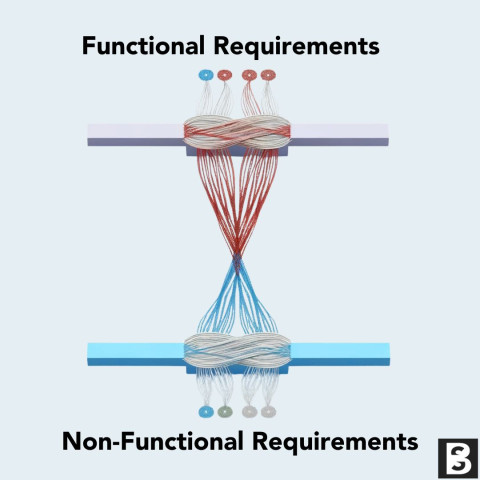Help save the Planet with Bespoke software
Bespoke software can be a powerful tool for businesses looking to reduce their environmental impact and enhance sustainability.
Transmitting a mere 1KB of data across the Internet results in approximately 0.2 grams of CO2 emissions. This figure may seem insignificant at first glance, but when considering the sheer volume of internet usage – with billions of page loads occurring every second – the environmental impact becomes substantial. For context, consider an average email that is about 20KB in size; sending 50,000 such emails is equivalent in carbon emissions to driving an average car for more than 50 miles!
Here are some practical tips on how Bespoke software can contribute to environmental responsibility:
1. Energy-Efficient Coding Practices
- Algorithmic Optimisation: Prioritise the use of algorithms that minimise computational complexity and resource requirements.
- Programming Language Selection: Choose programming languages known for efficiency and minimal energy consumption.
- Code Reviews: Implement a systematic code review process to identify and rectify energy-intensive code patterns.
2. Resource Optimisation Modules:
- Demand Forecasting: Incorporate machine learning algorithms or predictive analytics to enhance accuracy in demand forecasting.
- Inventory Management: Develop modules that intelligently manage inventory levels to reduce excess stock and minimise waste.
- Supply Chain Optimisation: Implement features that optimise the supply chain for resource efficiency and reduced environmental impact.
3. Paperless Processes:
- Document Digitisation: Design modules that facilitate the transition from physical to digital documentation, reducing reliance on paper.
- Electronic Signatures: Integrate electronic signature capabilities for a seamless transition to paperless approval processes.
- Workflow Automation: Implement workflow automation to streamline processes and minimise the need for physical paperwork.
4. Remote Work and Collaboration Tools:
- Virtual Collaboration Platforms: Develop collaboration tools that enable virtual meetings, document sharing, and project management.
- Real-time Communication: Prioritise real-time communication features to enhance collaboration among remote teams.
- Access Control and Security: Ensure robust access control measures to safeguard sensitive information when facilitating remote work.
5. Waste Reduction Analytics:
- Data Analytics: Implement robust data analytics capabilities to identify inefficiencies and areas for waste reduction.
- Operational Insights: Provide real-time insights into production processes, enabling proactive decision-making for waste reduction.
- Customisable Dashboards: Design customisable dashboards to empower users to monitor and analyse data relevant to waste reduction.
DID YOU KNOW
A report from The RoundUp found that 84% of customers say that poor environmental practices will alienate them from a brand or company
(Forbes.com)
6. Carbon Footprint Monitoring:
Integrate modules for monitoring and reporting on carbon footprints. Track energy consumption, emissions, and other environmental metrics to gain insights into the company's environmental impact. This information can be used to implement targeted strategies for reducing carbon footprints and improving sustainability.
- Data Collection Mechanisms: Establish mechanisms for collecting data on energy consumption, emissions, and other relevant environmental metrics.
- Visualisation Tools: Integrate visualisation tools to present carbon footprint data in an understandable and actionable format.
- Benchmarking: Include benchmarking features to compare the company's carbon footprint against industry standards and goals.
7. Renewable Energy Integration:
Custom software can be designed to integrate with renewable energy sources and smart grids. Optimise energy consumption patterns based on the availability of renewable energy. This ensures that energy-intensive operations align with periods of higher renewable energy availability, contributing to a greener energy profile.
- Smart Grid Integration: Design modules that integrate with smart grids to optimise energy consumption based on renewable energy availability.
- Renewable Energy Dashboard: Provide a dashboard to visualise and analyse the contribution of renewable energy sources to the overall energy profile.
- Energy Consumption Forecasting: Implement algorithms that forecast energy consumption patterns and align them with renewable energy availability.
8. Compliance Automation:
Develop modules that automate compliance checks with environmental regulations. By incorporating compliance checks into the software, businesses can ensure that their operations align with legal frameworks. Automated reporting can streamline the process of meeting environmental reporting requirements.
- Regulatory Compliance Checks: Incorporate automated checks to ensure ongoing compliance with environmental regulations.
- Audit Trails: Create audit trail features to track and document compliance-related activities for transparency and accountability.
- Automated Reporting: Develop automated reporting modules to streamline the process of generating compliance reports for regulatory bodies.

9. Continuous Improvement Features:
Design the software with features that support continuous improvement. This includes the ability to adapt and evolve the software over time to meet changing sustainability goals. A bespoke solution allows for ongoing customisation, ensuring that the software remains aligned with evolving environmental objectives.
- Modular Architecture: Design the software with a modular architecture that allows for easy updates and improvements.
- User Feedback Mechanisms: Implement mechanisms for users to provide feedback on sustainability features and suggest improvements.
- Agile Development Practices: Adopt agile development practices to respond quickly to changing sustainability goals and requirements.
10. User Education and Engagement:
Include user education and engagement features in the software. This can involve incorporating pop-ups or notifications that educate users on sustainable practices within the software interface. Promote environmentally friendly behaviours and highlight the impact of certain actions on resource usage and waste generation.
- In-App Tutorials: Integrate in-app tutorials to educate users on sustainable practices and highlight eco-friendly features.
- Notifications and Alerts: Implement notifications and alerts to inform users about the environmental impact of certain actions and suggest alternatives.
- Gamification: Explore gamification elements to engage users in sustainable practices, rewarding environmentally friendly behaviours within the software.
By meticulously incorporating these considerations into the design and development of bespoke software solutions, businesses can create tailored tools that not only meet their specific needs but also contribute to a more sustainable and environmentally conscious operation. This holistic approach ensures that sustainability is woven into the fabric of the software, promoting a lasting positive impact on both the business and the environment.

Admin Overload: The Silent Business Killer
The cost of manual, repetitive admin tasks In countless small and medium-s...
3 min read

eCommerce Trends 2025
The e-commerce landscape has been evolving at a rapid pace over the past fe...
5 min read

Shopify alternatives A comprehensive guide 2025
In the realm of e-commerce, Shopify has been a dominant player for years, r...
6 min read


